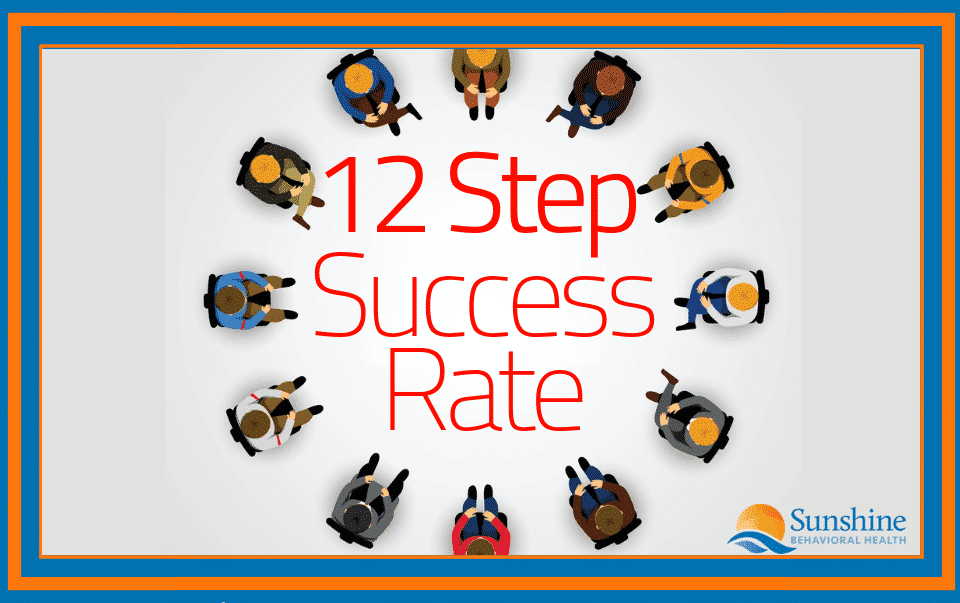
When the term “12-Step Program” comes up, it immediately brings to mind the widely used addiction treatment program that originated from the Alcoholics Anonymous, Christian-based treatment plan. Everyone has heard of the 12 steps and know what it is for, but how effective is the 12-step program when it comes to doing what it is supposed to do, wean people from addiction? Actually, there is little evidence and are no experimental studies that conclusively states the 12 step program has actually been effective in reducing alcohol dependence.
There is evidence of the efficacy of the 12 Steps for recovery. It’s been shown to improve sobriety. But even these studies don’t provide enough empirical evidence to recommend the program for anyone who suffers from addiction. Often, the success of the recovering addict in 12 steps will achieve largely depends on the type of 12 step programs they are enrolled in.
Criticisms of 12 Steps
There are several reasons why 12 steps might not be the right approach for everyone. First of all, its Christian-based ideology is off-putting to some and downright offensive to others. Secondly, complete abstinence is the linchpin of the AA 12 step program, but with some people, moderation is the preferred type of withdrawal from narcotics.
Some recovering individuals are turned off by AA Steps’ powerless concept and don’t like the idea of accepting they have no control over their own lives. Some rhetoric that runs through 12 Steps seems to view addiction is a sign of weak character rather than the disease it is known to be by scientists and addiction treatment professionals. There is also confusion because one hand AA admits alcoholism and other forms of addiction are a disease but the 12 Steps program instead calls it a spiritual failing.
Another issue that can take away from the program’s success rate is its inconsistency. The way 12 steps programs are implemented varies widely from one group to another and there is little consistency. While some groups take a strict and fundamentalist Christian outlook and use shame as a means of forcing members into compliance and sobriety, others may be more flexible and nuanced. Obviously, a shame-based technique isn’t going to be effective in all cases and in some cases may discourage the continuance of the program.
Alternate Abstinence Programs & Therapy
It’s important to know that the 12-step option is not the only addiction and recovery program available. Different programs may work for different individuals. Whereas 12 steps are effective for some people, others may have more success with alternative programs. Some of these include:
-
Individual and group cognitive behavioral therapy. This introspective approach encourages the individual to look inside and discover why he or she fell into this addictive cycle and encourages them to recognize and work to control and manage triggers. This is an opposite approach from the powerlessness principle. It’s important to note that many addiction programs use a combination of programs in treatment which can include both CBT and a 12 step approach adjusted to complement the other treatment technique.
-
Community Reinforcement and Family Therapy approaches are also effective. By treating the addiction as a family issue, family members, who usually strongly influence the individual can help them in their efforts to maintain sobriety. If former addicts can find new, sober social circles there is a better chance of maintaining sobriety following rehab than if they continue to associate with their still-addicted and using old friends.
-
Treatment through medication is also effective for some recovering addicts. Replacement medications which wean the person off the more addictive narcotic to a lesser one before sobriety like Methadone and those that use an agonist like Naltrexone which blocks the euphoria associated with getting high from opioids are also effective treatments for continued sobriety.
No One Size Fits All for Recovery
This is not to say that everyone doubts the effectiveness of the 12 Step Program or better a true 12 step recovery rate. Various studies on AA success stories have been done that provide encouraging information on the help the program has afforded test subjects. Some studies show abstinence rates for those who regularly attend 12 step meetings can be twice as high as those who do not. However, the study data didn’t always show a conclusive and direct link to 12 steps as the only or main method of abstinence.
The 12 Step Program can be an effective method for some people who are recovering from alcohol and drug addiction. However, it’s important to note it is not a one size fits all situation. Other types of abstinence therapy and programs may work better for others. Also, a 12-step program combined with other forms of abstinence and narcotics addiction treatment and recovery therapy can be highly effective, too. Questions or concerns on the 12 Step program? Do you know of anyone currently having issues with alcohol addiction? If so, make sure to reach out to Sunshine Behavioral Health today.A Message From Our CEO
Medical disclaimer:
Sunshine Behavioral Health strives to help people who are facing substance abuse, addiction, mental health disorders, or a combination of these conditions. It does this by providing compassionate care and evidence-based content that addresses health, treatment, and recovery.
Licensed medical professionals review material we publish on our site. The material is not a substitute for qualified medical diagnoses, treatment, or advice. It should not be used to replace the suggestions of your personal physician or other health care professionals.





